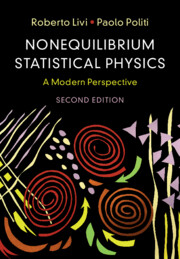Refine search
Actions for selected content:
2 results
6 - Absorbing Phase Transitions
-
- Book:
- Nonequilibrium Statistical Physics
- Published online:
- 19 June 2025
- Print publication:
- 03 July 2025, pp 242-270
-
- Chapter
- Export citation

Nonequilibrium Statistical Physics
- A Modern Perspective
-
- Published online:
- 19 June 2025
- Print publication:
- 03 July 2025
